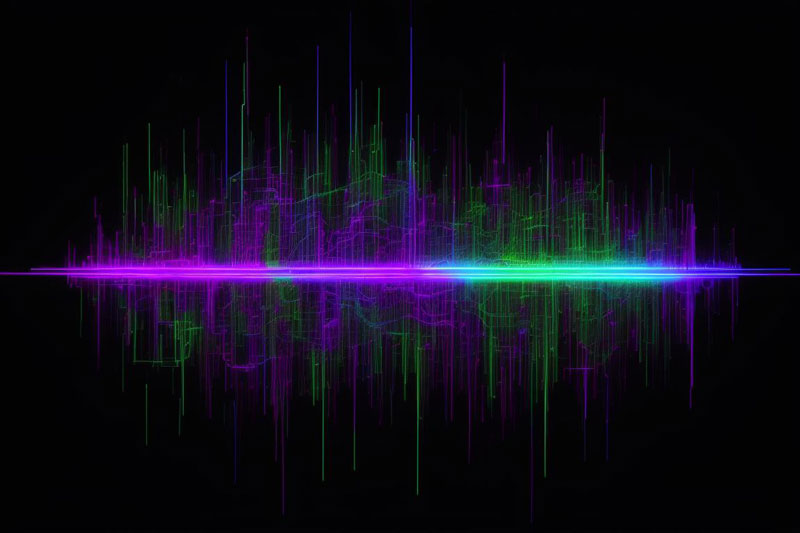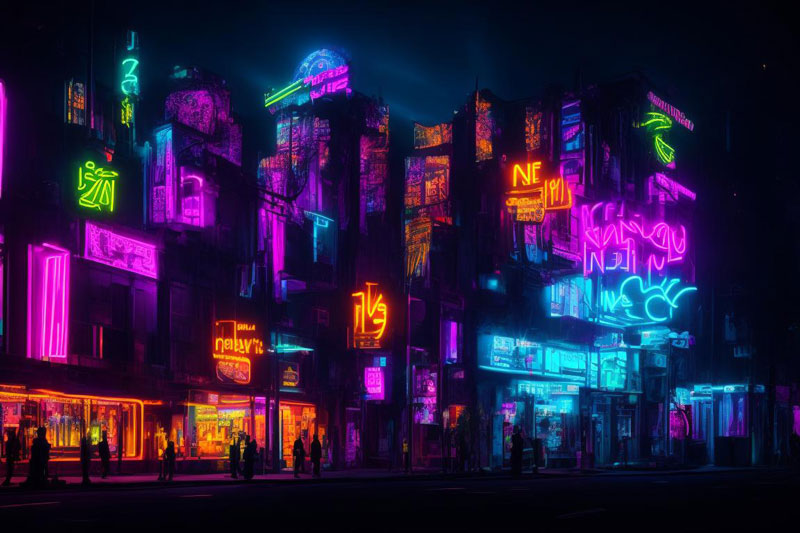DeepCluster is a notable self-supervised learning approach designed to improve the performance of neural networks on various computer vision tasks, particularly segmentation and classification. It leverages the power of unsupervised learning by clustering features extracted from unlabeled data and then using these clusters as pseudo-labels for training. This method enables the network to learn meaningful representations without requiring manual annotations, making it suitable for scenarios where labeled data is scarce or expensive to obtain.
Top 10 Free Midjourney Alternatives | Free AI Image Generators
Named Entity Recognition in Spacy | Huggingface With Explanation
LLM Machine Learning Meaning , Uses and Pros & Cons
you may be interested in above articles in irabrod.
Here’s a brief overview of the key features and components of DeepCluster:
- Clustering of Features: DeepCluster initially extracts features from unlabeled images using a pre-trained convolutional neural network (CNN). These features are then clustered using algorithms like k-means. The clusters act as proxy categories for grouping similar visual patterns.
- Pseudo-Labeling: Once the clusters are formed, each cluster is assigned a unique label. These labels are treated as pseudo-labels, enabling the use of unlabeled data for supervised training.
- Fine-Tuning: The network is fine-tuned using the pseudo-labels as supervision. The idea is that the network learns to produce embeddings that can effectively discriminate between different clusters, which, in turn, aids in improving segmentation and classification tasks.
- Unsupervised Pretraining: DeepCluster essentially performs an unsupervised pretraining phase, where the network learns to capture intrinsic structures and patterns in the data, without relying on any labeled information.
- Transfer Learning: The representations learned through DeepCluster can be transferred to downstream tasks like segmentation or classification, often leading to improved performance even with limited labeled data.
The DeepCluster approach has demonstrated its effectiveness in boosting the performance of neural networks on various benchmarks. By capitalizing on the wealth of information present in unlabeled data, it offers a way to harness untapped potential in training neural networks, especially when labeled data is scarce or expensive.
New Features in Deepcluster v2
Training in DeepCluster-v2 involves the refinement of both the classification head (c) and the convolutional network weights. These components are trained to classify images into their respective pseudo-labels during two consecutive assignments. The objective is to optimize the classification head to represent prototypes for the different pseudo-classes. However, a challenge arises due to the absence of mapping between assignments, rendering the previously learned classification head irrelevant for subsequent assignments. Consequently, this necessitates the re-setting of the classification head at each new assignment, leading to disruption in convnet training. To address this issue, we propose a solution: using the centroids derived from k-means clustering as the classification head (c). This approach helps mitigate the disruption caused by re-setting and ensures smoother convnet training.
Is Deepcluster a Supervised Technique ?
DeepCluster is not a supervised model; it’s a type of unsupervised learning technique used for clustering and feature learning in the field of deep learning. Unsupervised learning means that the model is trained on unlabeled data, without explicit supervision, to find patterns and relationships within the data. DeepCluster uses deep neural networks to automatically cluster data points based on their features, without requiring explicit class labels. This technique is often used for tasks like image clustering, where the model groups similar images together without needing predefined categories.
Deep Cluster with Pytorch
DeepCluster is an unsupervised learning technique for clustering and feature learning. In PyTorch, you can implement DeepCluster using various libraries and custom code. Here’s a simplified example of how you might approach implementing DeepCluster using PyTorch:
import torch
import torchvision
import torchvision.transforms as transforms
import numpy as np
from sklearn.cluster import KMeans
from sklearn.decomposition import PCA
# Load a dataset (e.g., CIFAR-10)
transform = transforms.Compose([transforms.ToTensor(), transforms.Normalize((0.5, 0.5, 0.5), (0.5, 0.5, 0.5))])
dataset = torchvision.datasets.CIFAR10(root='./data', train=True, download=True, transform=transform)
dataloader = torch.utils.data.DataLoader(dataset, batch_size=256, shuffle=True, num_workers=2)
# Define a deep neural network
class Net(torch.nn.Module):
def __init__(self):
super(Net, self).__init__()
# Define your layers here
def forward(self, x):
# Forward pass of your network
return x
# Initialize the model
model = Net()
# Define loss function and optimizer
criterion = torch.nn.CrossEntropyLoss()
optimizer = torch.optim.SGD(model.parameters(), lr=0.01, momentum=0.9)
# Train the model using self-supervised learning
for epoch in range(10):
for data in dataloader:
inputs, _ = data
optimizer.zero_grad()
outputs = model(inputs)
loss = criterion(outputs, targets) # Define targets for self-supervised task
loss.backward()
optimizer.step()
# Extract features using the trained model
def extract_features(dataset, model):
features = []
with torch.no_grad():
for data in dataloader:
inputs, _ = data
features.append(model(inputs).numpy())
return np.concatenate(features)
# Use K-means clustering on extracted features
features = extract_features(dataset, model)
pca = PCA(n_components=100) # Apply PCA for dimensionality reduction
features_pca = pca.fit_transform(features)
kmeans = KMeans(n_clusters=10) # Number of clusters
cluster_labels = kmeans.fit_predict(features_pca)
# Now, cluster_labels contains the assigned cluster labels for each data point
Please note that this is a simplified example, and the actual implementation might involve more complexity, especially in designing the neural network architecture and self-supervised tasks. Additionally, you’ll need to adapt this code to the specific dataset and problem you’re working on.
For a more complete and advanced implementation of DeepCluster, you might want to refer to research papers and open-source repositories that provide detailed code examples and explanations.
Deepcluster For Videos
DeepCluster can be adapted to work with videos, similar to how it works with images. The main idea behind DeepCluster is to learn feature representations from the data in an unsupervised manner and then perform clustering on those features. This concept can be extended to videos as well.
Here’s a high-level approach to adapting DeepCluster for video data:
- Data Preparation: Organize your video dataset and convert each video into a sequence of frames (images). You can use libraries like OpenCV to extract frames from videos.
- Feature Extraction: Similar to images, you’ll need to extract features from the frames of the videos. You can use a pretrained CNN architecture as the base network to extract features from individual frames.
- Temporal Information: Videos contain temporal information that images do not. Depending on your use case, you might want to consider how to leverage this temporal information. One approach could be to capture features from multiple consecutive frames and use them to represent a video segment.
- Self-Supervised Task: Define a self-supervised task for videos. This could involve predicting the next frame in a sequence, reconstructing a video segment, or any other task that encourages the model to learn useful features.
- Training: Train your network on the self-supervised task using the extracted video frames. This will result in learned feature representations for each video frame.
- Clustering: Apply a clustering algorithm (like K-means) on the learned features. The clustering will group similar frames together, forming clusters that represent semantically similar segments in the videos.
- Post-Processing: Depending on your goals, you can perform various post-processing steps. For example, you might want to compute centroids for each cluster to represent the cluster in a compact form.
- Application: Once you have clusters of frames representing segments of videos, you can use them for various tasks such as video summarization, action recognition, or even content recommendation.
It’s important to note that adapting DeepCluster for videos might require additional considerations due to the temporal nature of video data. You’ll need to experiment with the architecture, training strategy, and self-supervised task to ensure that the learned features capture both spatial and temporal information effectively.
As always, referring to research papers and open-source implementations that focus on video-based self-supervised learning can provide valuable insights into the specific challenges and solutions related to video data.
A Simple Video Segmenting Project
DeepCluster is a technique primarily designed for clustering images in an unsupervised manner. While it can be adapted to videos, the process can be complex due to the temporal nature of videos. Below is a simplified example of how you might adapt DeepCluster for segmenting a video using Python and PyTorch. This example focuses on a basic frame-based approach, and you may need to adjust it to your specific needs:
import torch
import torchvision.transforms as transforms
from torchvision.models import resnet18
from sklearn.cluster import KMeans
import numpy as np
import cv2
# Hyperparameters
num_clusters = 5
num_epochs = 10
learning_rate = 0.001
# Load pretrained ResNet model
base_model = resnet18(pretrained=True)
feature_extractor = torch.nn.Sequential(*list(base_model.children())[:-1])
feature_extractor.eval()
# Load and preprocess video frames
def preprocess_frame(frame):
transform = transforms.Compose([
transforms.ToPILImage(),
transforms.Resize(256),
transforms.CenterCrop(224),
transforms.ToTensor(),
transforms.Normalize(mean=[0.485, 0.456, 0.406], std=[0.229, 0.224, 0.225])
])
return transform(frame)
# Read video and extract frames
cap = cv2.VideoCapture('your_video.mp4')
frames = []
while True:
ret, frame = cap.read()
if not ret:
break
frame = cv2.cvtColor(frame, cv2.COLOR_BGR2RGB)
preprocessed_frame = preprocess_frame(frame)
frames.append(preprocessed_frame)
cap.release()
# Extract features for each frame
features = []
for frame in frames:
with torch.no_grad():
feature = feature_extractor(frame.unsqueeze(0))
features.append(feature.squeeze().numpy())
features = np.array(features)
# Apply K-means clustering
kmeans = KMeans(n_clusters=num_clusters)
cluster_labels = kmeans.fit_predict(features)
# Assign cluster labels to frames
for i, label in enumerate(cluster_labels):
frames[i].cluster_label = label
# Visualize the segmented frames
for frame in frames:
cv2.putText(frame, f"Cluster: {frame.cluster_label}", (10, 30),
cv2.FONT_HERSHEY_SIMPLEX, 1, (255, 255, 255), 2)
cv2.imshow('Segmented Video', cv2.cvtColor(frame.permute(1, 2, 0).numpy(), cv2.COLOR_RGB2BGR))
cv2.waitKey(100)
cv2.destroyAllWindows()
This example provides a simplified way to apply DeepCluster-like clustering on video frames. However, video segmentation involves additional complexities, such as handling temporal relationships between frames and dealing with motion information. More advanced techniques may be required to effectively segment videos based on their content.
For accurate and robust video segmentation, consider exploring research papers and open-source implementations specifically focused on video segmentation and unsupervised learning in video data.
Conclusion
DeepCluster is a powerful unsupervised learning technique used primarily for image clustering. It leverages the pre-trained features of a neural network to group similar images into clusters. This method provides benefits such as creating meaningful representations, discovering patterns, and reducing the need for labeled data. It’s particularly useful when labeled data is scarce or expensive to obtain.
However, DeepCluster has its limitations. It is designed for static images and may not directly extend to more complex data types like videos or dynamic sequences. Also, the choice of hyperparameters, such as the number of clusters and the learning rate, can impact the quality of clustering results. Tuning these parameters requires careful experimentation.
DeepCluster offers a powerful approach to self-supervised learning, demonstrating the potential of utilizing unlabeled data effectively. Its applications span across various domains, including image analysis, feature learning, and representation discovery. If you’re looking to explore and understand the underlying patterns in your data without relying on manual annotations, DeepCluster is a technique worth considering.








